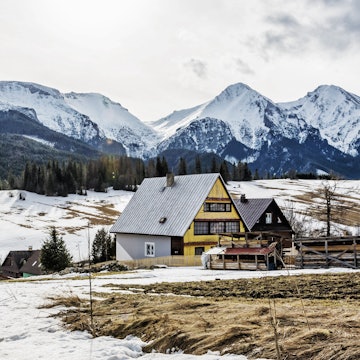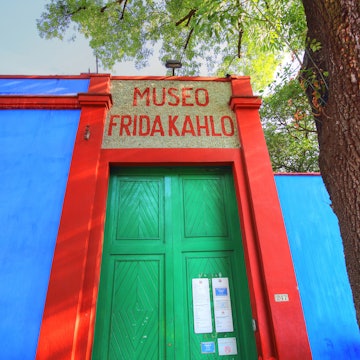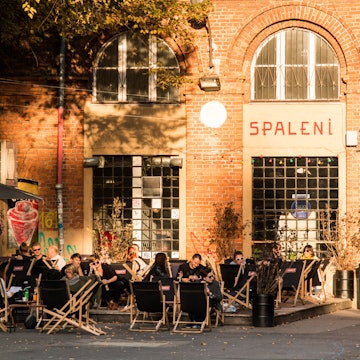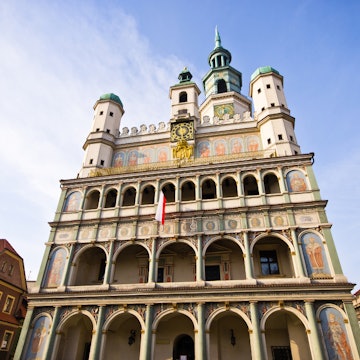

Forget the car – with a rail network that radiates to all parts of Poland from its biggest cities, a much better way to experience the country is by train.
Whether departing from shiny new stations or crumbling old ones, along busy main lines or sleepy branch lines, aboard brand new trains or communist-era carriages, Polish train travel is never dull. Here are some key features of Poland's complex and sometimes confusing rail network, and our tips to help you navigate it.
Polish rail operators

Poland's sprawling rail system was welded together from separate 19th-century networks developed under the German, Austro-Hungarian and Russian Empires. Some of the resulting quirks are still evident: denser coverage and more frequent rail services in the west than in the east, and regional train stations with a diverse architectural heritage. Other aspects were inherited from the post-war communist era, or arrived via redevelopment in the 21st century.
Long-distance intercity train journeys are operated by the national rail company PKP. Shorter trips are handled by the relevant rail company of each Polish region. For example, if you take a trip to the countryside around Warsaw you might be hosted by Koleje Mazowieckie (mazowieckie.com.pl), while from Poznań to Gniezno you’re likely aboard a train belonging to Koleje Wielkopolskie (koleje-wielkopolskie.com.pl).
You don’t need to worry about this division very much. At most stations, ticketing is unified, but at some larger stations, separate ticket booths are designated for long-distance and regional trains.
Train schedules

Some larger train stations have airport-style departure boards but the rest – right down to the smallest trackside halt – will at least have posters listing departures and arrivals. The key to these is colour. Yellow posters list departures; white posters list arrivals. Each includes the numbers and names of trains, intermediate stops, and on-board facilities.
Faster trains with fewer stops are listed in red ink, while a stopping-all-stations train (known as a pociąg osobowy in Polish) calls at more obscure locations, and is listed in black ink.
Train timetables are available in English on PKP's website (rozklad-pkp.pl/en).
Buying tickets

For many years, you bought a ticket the same way at every station: by speaking broken Polish through a ticket window.
This is still the only way to buy tickets at smaller stations (and, surprisingly, at some of the larger ones too) so, before joining the ticket queue, either a) brush up your Polish; b) write down the rail journey you want to make, including times and locations, and present this to the ticket agent; or c) both of the above. Good terms to know for long-distance trains are pierwsza klasa (first class) and druga klasa (second class).
Many of the country's larger stations have recently installed ticket vending machines which provide instructions in English, which makes the process simpler.
Finding your platform

Finding the right platform is not always as easy as it seems. In Poland, both sides of the platform are given the same number – so there might be two trains departing from Platform 2 at the same time. Some stations now indicate the track number as well as the platform number, but these can be erratically distributed in non-numerical order across the station.
This platform confusion is the single most stress-inducing aspect of Polish train travel, but don’t despair – there are ways to ensure you’re in the right place. If you’re lucky, the station will be big enough to have digital signage on each platform, informing you of the destination of the next train.
A better bet is to look at the side of the train. Either it’ll be a newer model with a digital destination sign, or it’ll be an older version with a metal plate listing the stops. If you’re still uncertain, ask a fellow passenger where the train is heading.
Rolling stock

Polish trains are somewhat like Forrest Gump’s box of chocolates – you never know what you’ll get until it arrives.
On the shorter regional routes, EU funds have helped to introduce sleek modern commuter trains, usually a single vehicle with sealed windows. Alternatively you might find yourself in one of the older short-distance trains with worn red vinyl seats, wood veneer, and stiff but openable windows. It’s a similar picture on long-distance journeys: the priciest ticket class, Express InterCity, applies to fast 21st-century trains with open-plan seating.
Far more atmospheric, however, are the older long-distance carriages divided into compartments: eight green-upholstered seats in second class, and six red seats in first class. Score a first-class window seat with its handy little table and a view of the passing countryside, and enjoy the comfy nostalgia.
Scenic stations

Polish stations are a fascinating jumble of old and new. Arguably the most attractive is Wroclaw Główny. Built in 1857 by the Kingdom of Prussia, its fanciful turrets and glamorous interiors have recently been restored.
At the other end of the timescale are stations such as Poznań Główny. Opened for the 2012 Euro football championships co-hosted by Poland, it’s a gleaming glass and steel structure; and, in contemporary style, connected to a large shopping mall.
Chronologically between these two is Warszawa Centralna. Constructed in the mid-1970s, it was intended by the then regime to act as a showcase of communist-era transport. From the outside it looks like a chunky insect-like spaceship; its interiors include a lofty ticket hall, a maze-like shopping concourse, and subterranean platforms.
Poland's most memorable train journeys

On many Polish rail routes, you won’t see much but green fields and the back streets of towns. But there are definitely some trains worth catching for the view.
Jelenia Gora to Szklarska Poręba: Travel up into the Sudetes mountains, from the Silesian city of Jelenia Gora to Szklarska Poręba, a pretty holiday town that’s a base for hiking and snow sports.
Gdynia to Hel: From the Baltic port of Gdynia, this train journey takes you along the narrow Hel Peninsula to Hel itself, a popular seaside town with good windsurfing.
Poznań to Wolsztyn: One for the true trainspotter, this journey from Poznań takes you to the home of a working steam train depot at Wolsztyn. Not only can you visit the Wolsztyn Roundhouse (parowozowniawolsztyn.pl), it’s possible to drive a steam train on courses offered by the Wolsztyn Experience.














